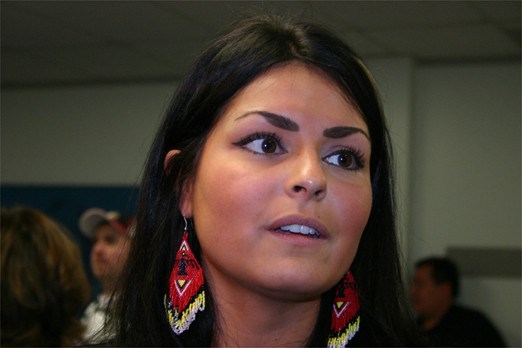This winter students in two First Nations communities will get the chance to take a look at life through a camera lens.
Through a $65,000 Ontario Trillium Foundation grant, the Dilico Children’s Foundation is launching the See Us, Hear Us project in the communities of Ginoogaming and Long Lake No. 58. The project will see the students learn how to use a digital camera and then send them into their communities to take photos.
See Us, Hear Us is a 16-week Photovoice project that gives students the opportunity to become more involved in their home communities, said project co-ordinator Celeste Pedri.
“It shows kids how to blend skills related to photography and social activism skills in a way that allows them to engage their community members and issues that they think are really important to their future and wellbeing,” she said.
Not only will the youth learn how to use the cameras and how to edit photographs, but also how to write about their images, plan exhibits.
Pedri said one of the main benefits of the project is that it brings learning out of the classroom and gets the rest of the community involved in the child’s education.
“It teaches them new ways of expressing themselves,” she said. “It’s about building pride and self-confidence. It’s about bringing the community together because when they exhibit their work, they’re going to be inviting their community members – their teachers, their leaders, their parents – to start talking, to start the dialogue around what they view as being really essential to their future.”
Not only will the students exhibit their work in their home communities but also at a gala at the Thunder Bay Art Gallery later this spring.
Trillium Foundation grant review team chair Keith Nymark said they chose to invest in the Photovoice project to give the youth a voice, something they often don’t have.
“When we saw this we realized really quickly that here was an opportunity for kids to be able to say what they’re feeling, to show in photos of their community,” he said. “I like the idea of it being an opportunity to be social activists…to be able to speak out and say this is what we like, this is what we don’t like.”
The idea for the project sprung from a video project Pedri was involved where some of the kids were actors.
“They were asking so many wonderful questions about photography and videography and what do directors do…you could see there was a real thirst, a real interest, in this type of stuff,” she said.
Sign in or register
- Messages
- Post a Listing
- Your Listings
- Your Profile
- Your Subscriptions
- Your Likes
- Your Business
- Support Local News
- Payment History
Registered Users
Already have an account?
New Users
Create a free account.
